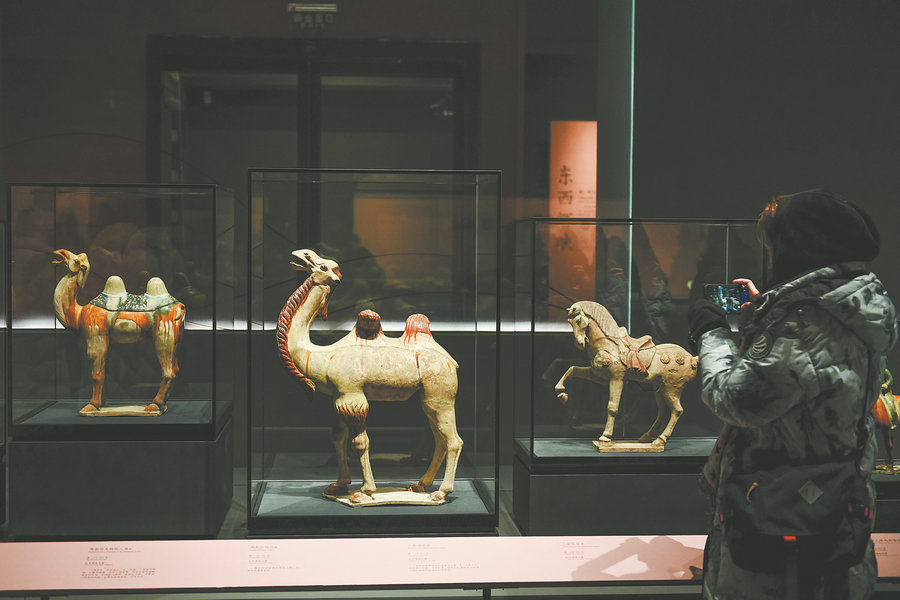

In the center of the gallery, a cluster of Tang pottery figurines known as sancai grab attention. They include figurines of camels and merchants from West and Central Asia. In spite of their age, their glaze and vividly portrayed facial expressions still seem fresh, and remind people of the importance of exchanges.
These pioneering merchants may have disappeared into the dust of time, but the routes they once explored have become immortal. In the New Book of Tang, the official history of the dynasty compiled by the famous 11th-century historian and poet Ouyang Xiu, different routes from China to the Arabian Peninsula are recorded, along with various countries and their distances.
A copy printed in the Forbidden City in 1739 is on display near the entrance of the exhibition as a teaser.
"Civilization means that a group of people inspire their surrounding areas to prosper as they achieve development," Wang explains.
"Interactions between ancient China and West Asia not only benefited each other, but also influenced other regions and contributed to their shared growth," he says.